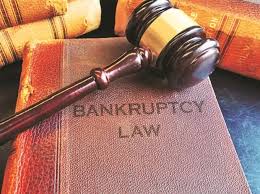ALTERNATIVE REMEDIES FOR CREDITORS ON ACCOUNT OF SUSPENSION OF INITIATION OF CIRP UNDER THE IBC
By EDITORIAL TEAM - INSOL India Posted On : July 27, 2020

During the period of suspension of initiation of CIRP under the IBC, creditors (both financial and operational) have the option of exercising substitute / alternate remedies (to the IBC) for recovery of the debts owed to them. Some alternative remedies (under different statutes)are:
- Section 230 &231 of the Companies Act, 2013: Sections 230&231 provide a framework forthe implementation of ascheme of ‘compromise or arrangement’ between ‘a company and its creditors or any class of them’ or ‘a company and its members or any class of them’. These provisions have beenused extensively in mergers, demergers, and amalgamations but they have not been used extensively for debt restructuring.Furthermore, section 230 expressly stipulates or allows its applicability for a ‘scheme of corporate debt restructuring’ which could be a viable alternative torecovery of debts underthe IBC.
- Voluntary Liquidation and Winding Up: Corporate debtors who wishto exit a particular business or field of business may consider options like voluntary liquidation under the IBCand, if eligible, corporate debtors could also utilize the provisions for winding up specified for certain companies under the Companies Act, 2013 read with the Companies (Winding up) Rules, 2020 which cameinto force on 1April 2020.
%u200B - Mechanisms for Operational Creditors:Operational Creditors canopt for debt recovery mechanisms such as the following:
- filing Summary Suits under Order XXXVII of the Code of Civil Procedure, 1908;
- filing of regular recovery civil suits under the Commercial Courts Act, 2015 before the appropriate civil courts;
- seeking remedies under the MSME Act, 2006;and
- utilizing the arbitration mechanismunder the Arbitration & Conciliation Act, 1996. However, this is subject to the existence of an arbitration agreement/ clause in the main or relevant agreement.
- Recovery before the Debt Recovery Tribunals (“DRT”): Banks and financial institutions can seek recourse before the DRT under the Recovery of Debts Due to Banks and Financial Institutions Act, 1993 (“RDDBFI Act”) for recovery of debts owed to such institutions.
- Securitization and Reconstruction of Financial Assets and Enforcement of Securities Interest Act, 2002 (“SARFEASI Act”):The SARFAESI Act provides a mechanism for secured creditors to recover the debt owed to the borrowers without the necessity of approaching the courts or tribunals. The SARFAESI Act also empowers secured creditors to acquire possession of the secured assets, take over the management of borrower's business, appoint any person to manage the affairs of the secured assets and to receive the money of any person who owes the borrower any amount which may discharge the secured creditor’s debt if theborrower has failed to discharge his liability of repayment of a secured debt which has become a non performing asset.
- RBI’s Prudential Framework for Resolution of Stressed Assetsdated 7 June2019(“PrudentialFramework”): The RBI’s Prudential Framework isalso an alternative option for creditors with regards to the restructuring of debt. The PrudentialFramework provides for an out of court restructuring which is negotiated between the borrower and its lenders / creditors with the participating creditors bound to such terms by an intercreditor agreement executed amongst them. The Prudential Framework, however, does seek to protect the interests of dissenting lenders and also accords importance to the ranking of security interest by statingthat priority of security interest should be recognized while formulating a resolution plan. Under general circumstances, a period of 180 days has been prescribed for arriving at and implementing a resolution plan. However, in light of the COVID-19 pandemic, the timelines for implementation of a resolution plan under the Prudential Framework has been extended by the RBI to 360 days.
